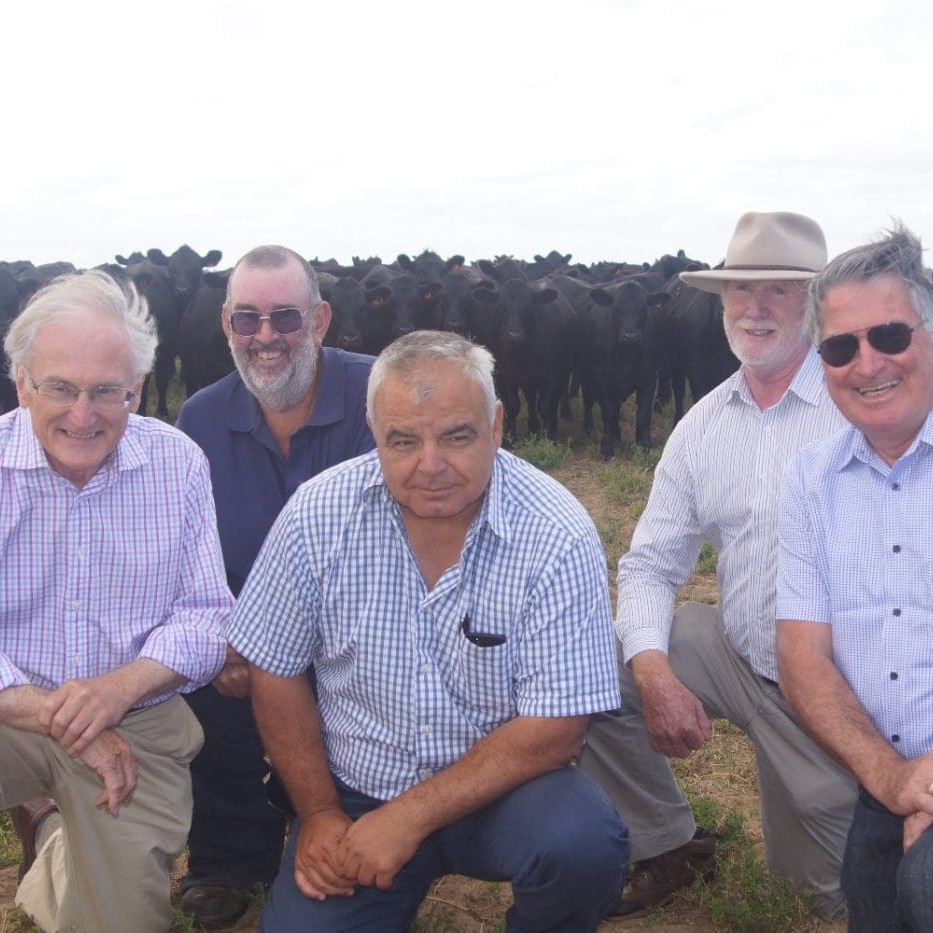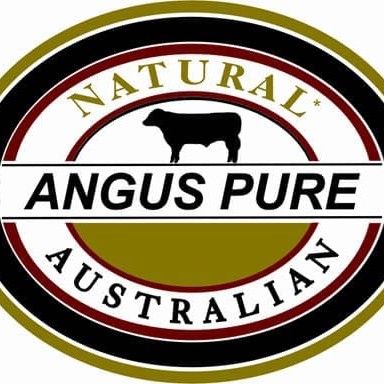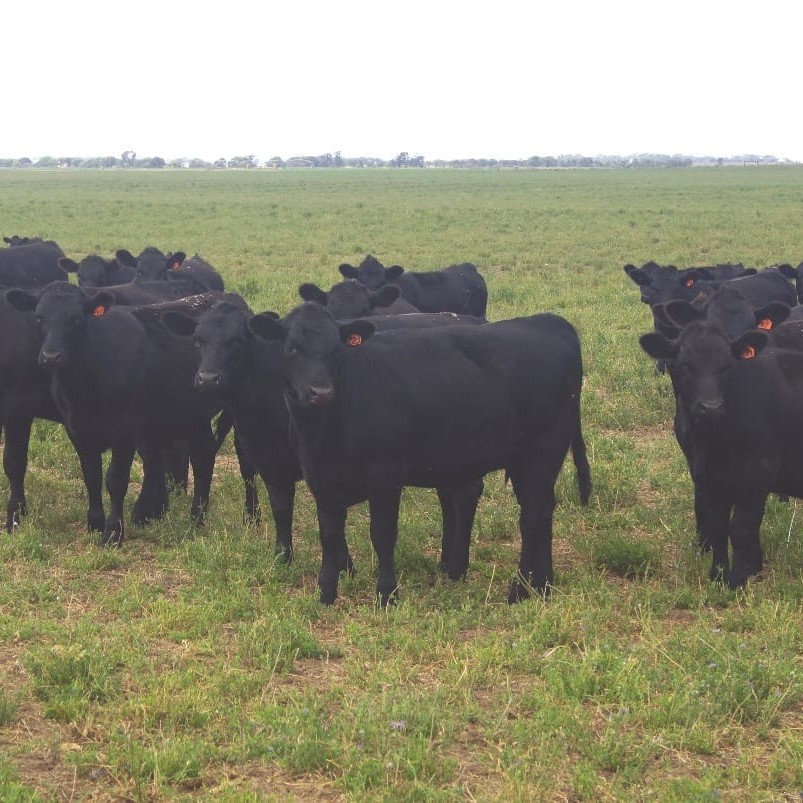The number of MSA-backed red meat brands registered in Australia has grown from 76 to 90 over the past 12 months, and there’s no better refection of the expansion in brand programs than the recent progress seen in the ‘Angus Pure’ grassfed program.
Brands with ‘natural’ or ‘grassfed’ claims have been one of the big growth areas for supply chain marketing managers in recent years.
 Certified Australian Angus Beef Pty Ltd, which founded its business on CAAB grainfed beef over the past 15 years, took a somewhat adventurous decision in 2008 to launch a separate ‘Angus Pure’ grassfed, no-HGP, MSA-backed brand program to tap into the emerging natural segment.
Certified Australian Angus Beef Pty Ltd, which founded its business on CAAB grainfed beef over the past 15 years, took a somewhat adventurous decision in 2008 to launch a separate ‘Angus Pure’ grassfed, no-HGP, MSA-backed brand program to tap into the emerging natural segment.
What’s happened since has gone beyond the imagination of the CAAB organisation and its chief executive, Phil Morley, who first floated the idea.
Six years after the program launch, Angus Pure has gone from being a very minor sub-set of the CAAB company’s overall branded beef throughput, to starting to rival the parallel grainfed CAAB brand program in size.
Currently, Angus Pure is produced under licensing agreement out of Thomas Foods International (formerly T&R) Murray Bridge plant in South Australia. A smaller service kill is also being conducted at Northern Cooperative Meat Co at Casino, in NSW.
The corresponding CAAB grainfed brand program last year accounted for about 78,000 head of cattle (all licensed sites, not just TFI Murray Bridge), while Angus Pure numbers rose to well above 40,000 head through Murray Bridge.
This year, the Angus Pure program will grow much further. TFI Murray Bridge is currently processing about 1200 Angus Pure cattle each week, and the company has stated publicly that that figure could grow to 2000 head per week. That would represent annual throughput of at least 60,000 head, and potentially closer to 100,000 head, which would make it among the largest brand programs in Australia.
Currently about 400 head per week are lighter carcase weight spec cattle for the domestic program, with the balance heavier export weights.
It might have seemed incomprehensible only a few years ago, but the grassfed Angus Pure program could go past its longer-established CAAB grainfed ‘cousin’ some time in the next year or two in volume terms. Significantly, though, Angus Pure does not appear to be robbing CAAB grainfed of throughput: instead, it is coming as incremental growth, on top of existing business.
Additionally, there’s been some interesting, and very significant signals coming out of the domestic wholesale market. Going against traditional trends, there have been situations where Angus Pure chilled primals have made more money at wholesale level than equivalent chilled grainfed.
“As a broad statement, Angus Pure is bringing similar money as established quality grainfed brands,” Phil Morley said.
That suggests that the Angus Pure program cannot currently supply enough beef to fill the demand for ‘natural/grassfed’ on the domestic wholesale and export fronts, for use in retail and food service applications.
Cut size also has something to do with it, wholesalers tell Beef Central. The spec for MSA-graded Angus Pure runs from carcase weights 200-260kg for domestic, and 260-320kg for export. What’s being found is that for the domestic retail trade, particularly, smaller primals are in higher demand because of consumer preference for more ‘manageable’ smaller portion sizes.
“Part of the reason why it’s been so successful on the domestic market is that there is as much demand for the insides, the outsides, the topsides and the chucks as there is for the sweet cuts, because of the size of the primal,” Mr Morley said.
Export growth into US
Another huge driver of growth in the Angus Pure program over the past two years has been the penetration into the US export market, through a major deal to supply a grassfed/natural product into the huge Safeway supermarket chain.
 Through TFI’s ComFoods US wholesale division, Safeway is taking a range of cuts as well as supply of manufacturing meat for ground beef.
Through TFI’s ComFoods US wholesale division, Safeway is taking a range of cuts as well as supply of manufacturing meat for ground beef.
“It’s been a tremendous success, because there is not a large scale ‘natural’ program in the US, per se,” Mr Morley said. “Safeway really sees this as something special.”
While the domestic market remained very strong for Angus Pure, the real breakthrough for recent program growth had been the uptake by the Safeway retail chain.
“TFI currently does not have the capacity to supply into all the Safeway stores that want it, but Safeway has carefully staged its release into more stores, as production numbers have grown.”
The CAAB company recognised very early the need to achieve USDA brand claim approval surrounding terms like ‘natural’ and ‘grassfed’, and the Angus Pure product was among the first to meet the country’s stringent brand claim requirements.
Other Angus Pure exports are being made in in smaller volumes into the Middle East, Malaysia, Korea and other markets.
The CAAB program is also developing an Angus Pure value-added product, perhaps as simple as a sausage or a burger pattie in the initial release, to further tap into the popularity of the natural movement.
“TFI regards Angus Pure as a very important part of its business, and it has been extremely supportive of the program,” Mr Morley said. “They are as passionate about the brand as we are.”
Both the board of the CAAB company and Safeway and Comfoods representatives, visited TFI’s Murray Bridge plant and surrounding cattle suppliers to the Angus Pure program recently.
 One of the distinct trends in livestock supply in TFI’s Angus Pure program has been the adoption of supply chain strategies, where breeders in one region turn steers and heifers off younger, to be backgrounded and grown-out on other properties aligned with the program, better-equipped to finish stock.
One of the distinct trends in livestock supply in TFI’s Angus Pure program has been the adoption of supply chain strategies, where breeders in one region turn steers and heifers off younger, to be backgrounded and grown-out on other properties aligned with the program, better-equipped to finish stock.
A good example visited during the recent stakeholder visit was found in the Meningie area near Lake Albert, southeast of Adelaide, where lucerne stubble left over after centre-pivot irrigated lucerne hay production is used to finish thousands of Angus Pure yearling cattle each year, bred by Angus producers in other areas.
Being HGP-free and carrying at least three-quarters Angus genetics (the vast bulk are in fact straightbreds) the cattle coming through the program are performing exceptionally well in MSA grading compliance, even with specs set tightly at boning groups 1-6.
TFI’s livestock general manager Peter Bond said as the Angus Pure program had grown, his company had tended to enlarge its livestock catchment area. Cattle today are drawn from as far north as Central NSW; across Victoria; and throughout southern regions of South Australia.
“A lot of producers are working with us in backgrounding the Angus Pure stock that are bred in other areas,” Mr Bond said. “There’s a lot of lucerne grown around here, and other finishing programs are silage based,” he said.
He said supply was not really becoming more difficult, as the program demands grew, because livestock suppliers were tending to ‘grow with the Angus Pure program’ as it gathered pace.
